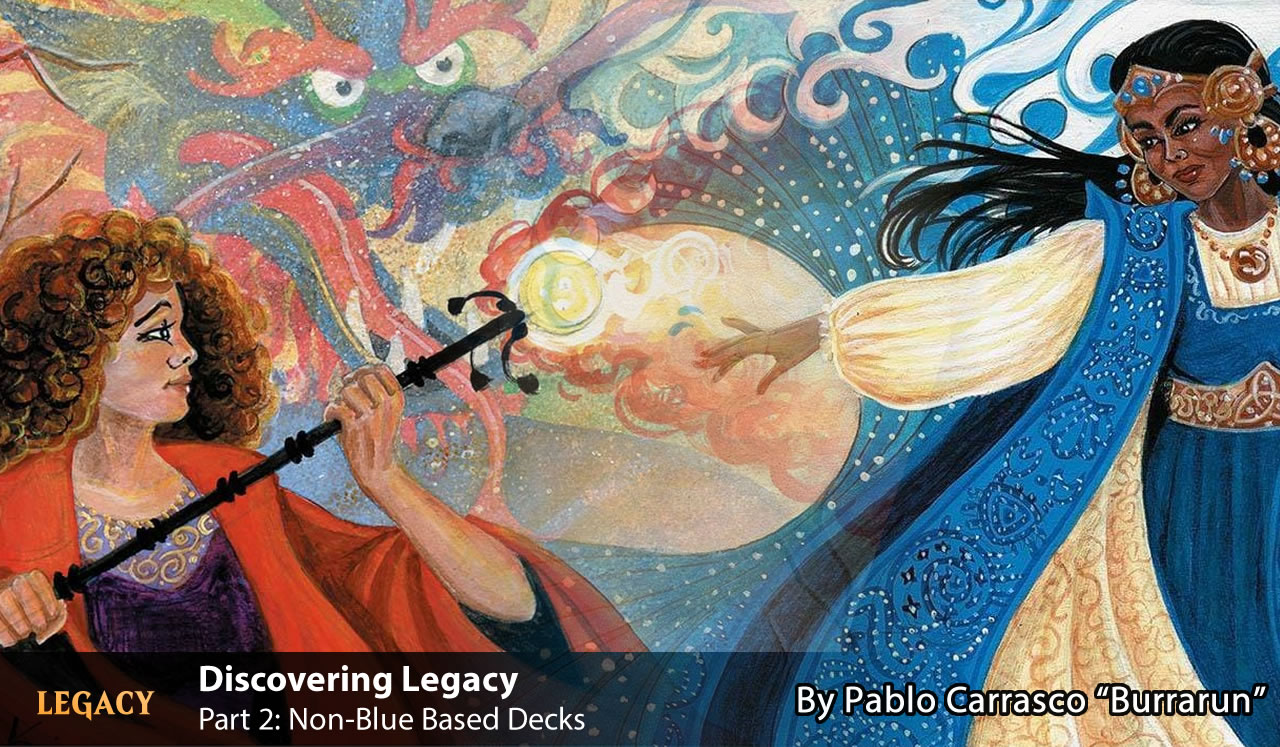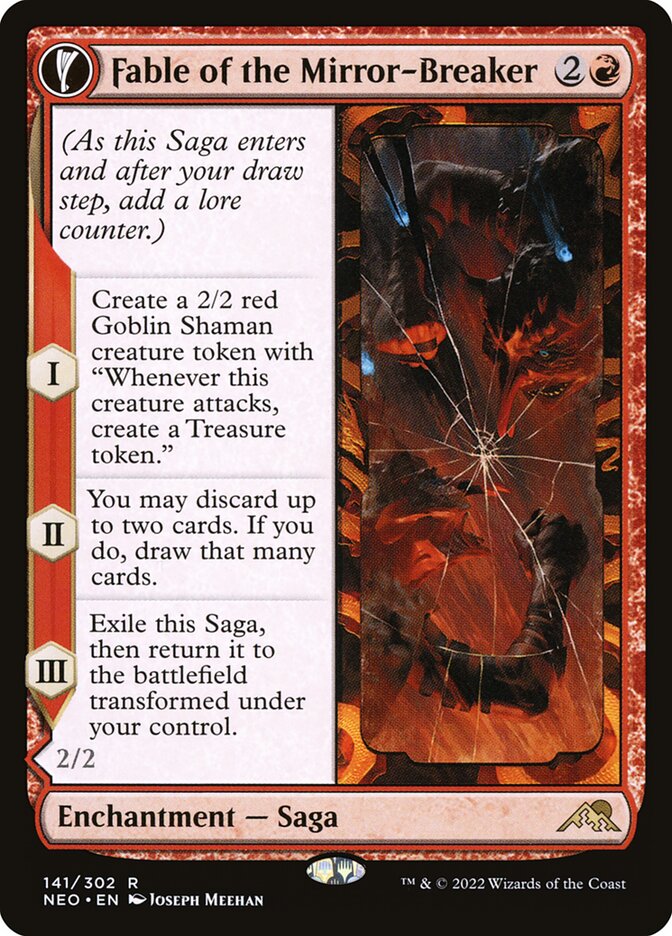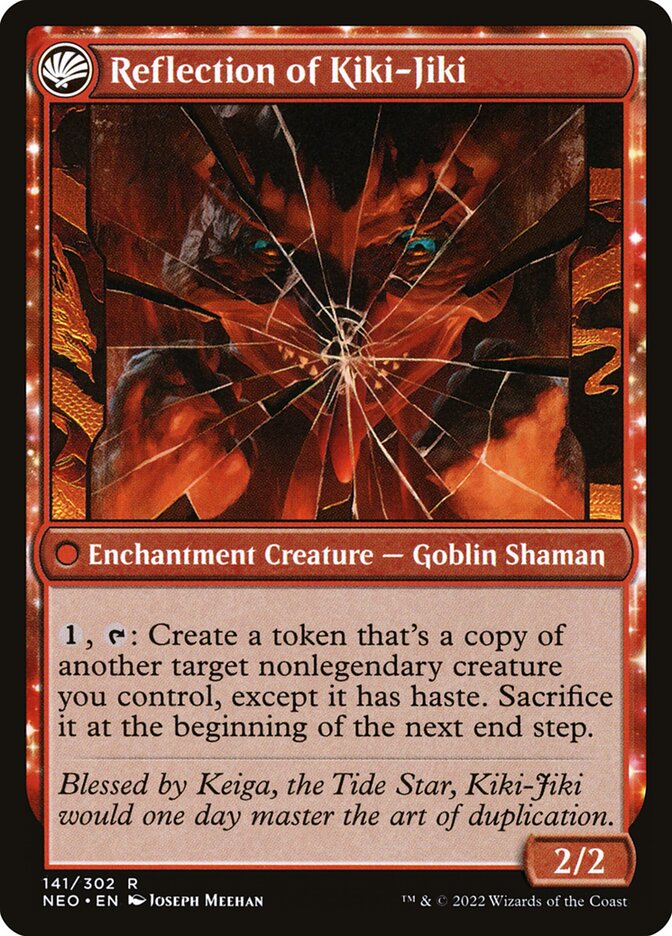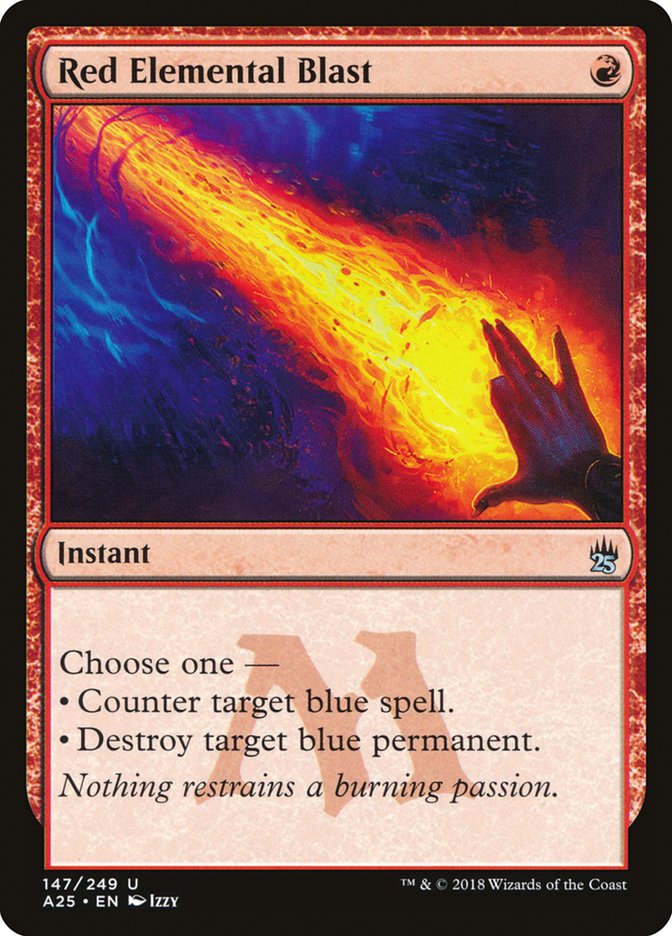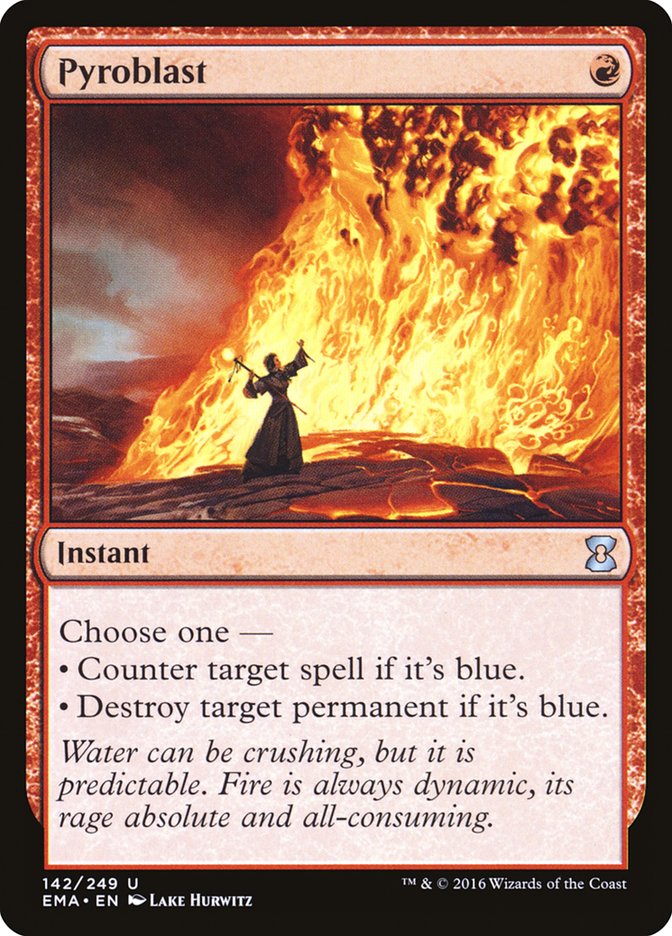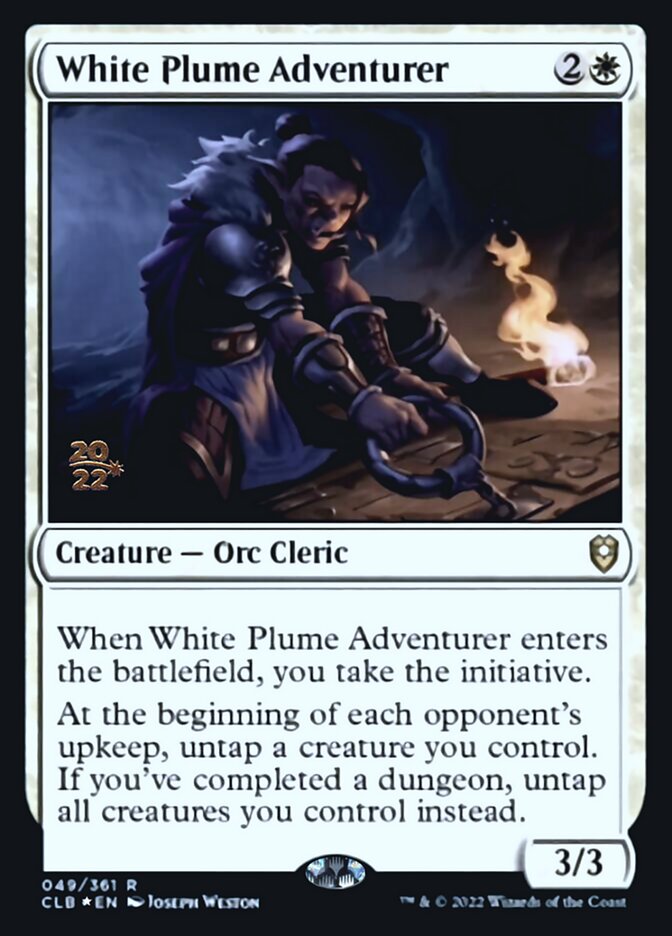Discovering Legacy Part 2: Non-Blue Decks
Quick intro
In this follow-up to my previous Legacy article about Legacy key Archetypes , we'll take a look at non-blue archetypes to give you an overview of how they function and how to best fight them.
1. Red-based decks
Primarily, we'll find two types of Red-based decks: Mono Red Prison and Painters. These decks have in common that they combine mana acceleration with the best cards in this color, but with totally different gameplans.
While one player will attempt to lock down their opponent with cards like Chalice of the Void or Trinisphere, the other will attempt to win through the combo of Painter's Servant + Grindstone.
These decks have seen their power level increased with the introduction of Fable of the Mirror-breaker. This card puts them at the top of the competitive landscape due to its ability to generate card advantage with its two creatures, and at the same time, it is able to filter the cards in hand.
Another powerful card in these decks is Fury, both for its ability to clear the board and finish off the opponent.
Mono Red Prison
The goal of this deck is straightforward: start the game with one or more of our spells that disrupt our opponent's game plan, and then finish off the game with one of our creatures.
Key cards

The deck has the capability to resolve a Blood Moon on turns 1-2, which can often be enough to win the game due to the small amount of basics that are played in the format.
Reference decklist
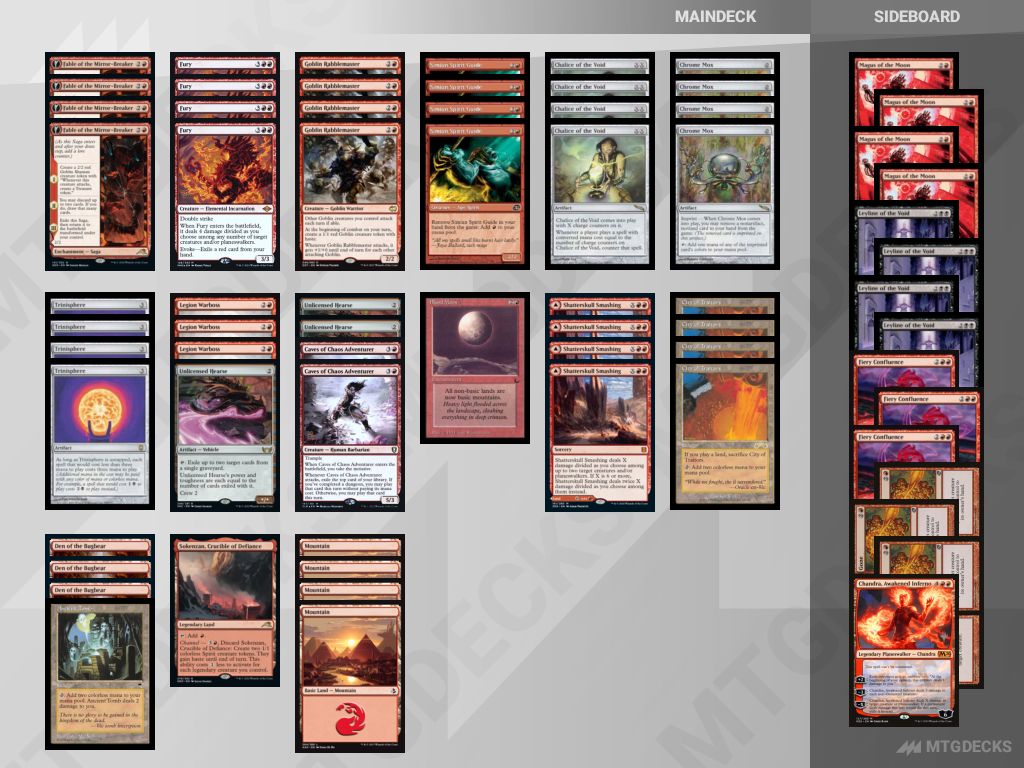
https://mtgdecks.net/Legacy/mono-red-prison-decklist-by-willpulliam-1493842
Painters
The main strategy of this deck is to overwhelm our opponent with the Painter's Servant + Grindstone combo, but we can also win games by attacking with our constructs and other creatures.
Key cards

This deck's foundations are Pyroblast and Red Elemental Blast, which become incredibly valuable with Painter's Servant, allowing us to even destroy our opponent's lands.
Reference decklist

https://mtgdecks.net/Legacy/painter-gridstone-decklist-by-cloutgoatranger-1493822
These decks are heavily geared towards a blue-based metagame, being less effective in environments where decks are not built around this color.
How to defeat them
The most commonly used cards to counter this type of strategy would be the following:

The greatest danger of this type of deck is in the early turns, as the rest of the decks have access to the best cantrips in the format. In the long run, they will gain an advantageous position, with the explosive power of these decks in the early turns being their greatest asset.
2. Graveyard based decks
We will primarily see two distinct graveyard-based decks in the format, these being Reanimator and Oops All Spells. Both share similar mechanics, but they close out the game in different ways.
Reanimator
A truly classic and iconic deck. Its objective is to discard a powerful creature and then reanimate it with one of our spells. Keep in mind that our reanimation spells can also be used in our opponent's graveyard, if needed.
Current versions typically feature a red-black color combination with a splash of white for some sideboard cards, all accompanied by a heavy discard package.
Key cards

We must be careful in the second game when playing against it, as some players include Show and Tell in their builds as an alternative plan to avoid graveyard hate.
Reference decklist
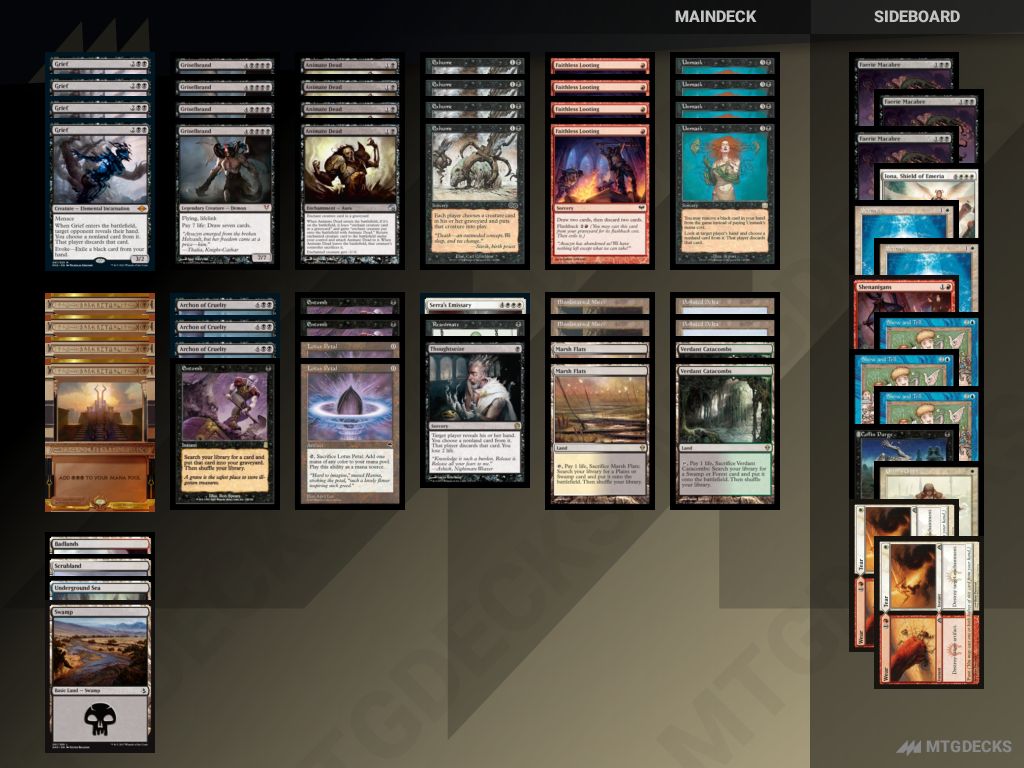
https://mtgdecks.net/Legacy/reanimator-decklist-by-oscar-franco-1493832
OOPS ALL SPELLS
This deck's mechanism of victory is quite simple; using Balustrade Spy and Undercity Informer, you can quickly cycle through the entire deck, enabling you to cast Narcomoeba, reanimate a Thassa's Oracle, and win the game. It's a highly explosive deck, with disruption in the form of Pact of Negation, discard, and Veil of Summer.
Key cards

Reference decklist
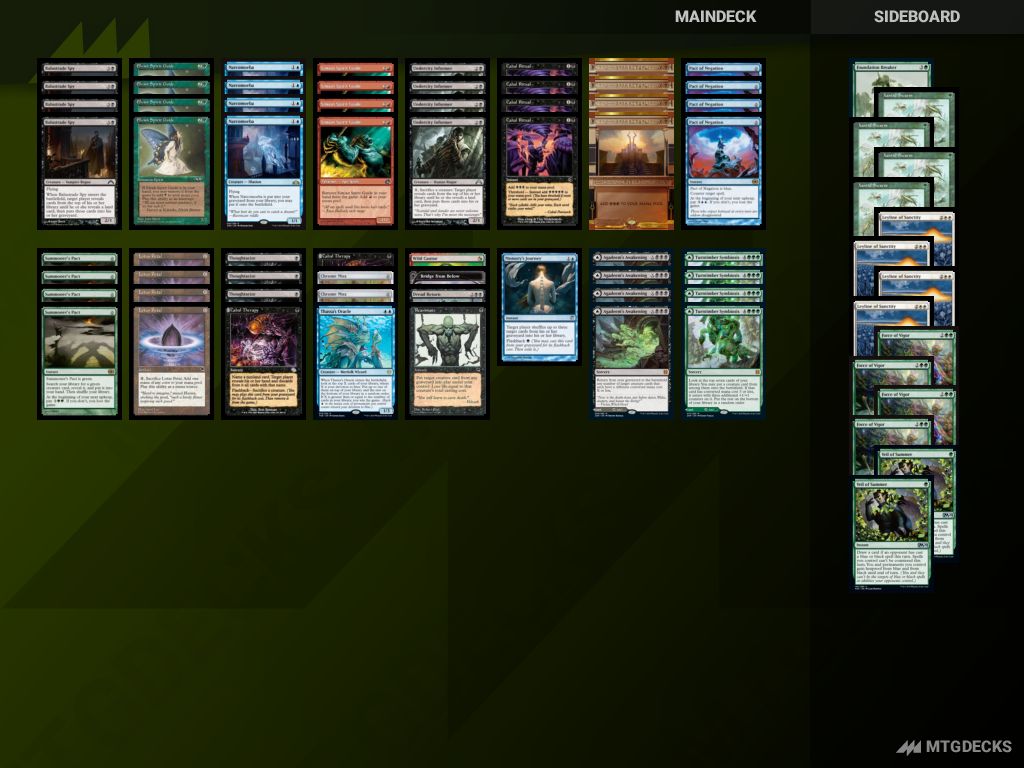
https://mtgdecks.net/Legacy/oops-all-spells-decklist-by-jan-swan-1494671
The primary advantage of these decks is their ability to surprise the opponent and punish the opponent's hands that have little or no interaction with our starting hand.
How to defeat them
After sideboarding, we should save some removal to combat Xantid Swarm.
The main cards to combat them can be the following:

3. Elves
This deck would be halfway between combo and aggro, as it is capable of populating the table in a few turns and beating down the opponent or stealing a large amount of cards through a Glimpse of Nature and finishing the game with Natural Order.
The great addition to these archetypes in recent years has been Allosaurus Shepherd. This powerful creature will allow us to resolve all of our spells with its static ability and act as a finisher by transforming all of our elves into 5/5s.
Key cards

We are now seeing builds that don't rely heavily on Elves and instead focus on a mid-range game plan, utilizing the strength of Fiend Artisan. Combined with the deck's ability to generate copious amounts of mana, it becomes really powerful.
Reference decklist

https://mtgdecks.net/Legacy/elves-decklist-by-sam-quinn-1494668
How to defeat them
Cards that can help us deal with these strategies:

Cards that can both attack their drawing engine as well as reset the board.
4. Death and Taxes
A legacy classic, with low-cost and disruptive creatures paired with removals and all the possible "comes into play" triggered abilities.
In recent years, the big additions to these types of decks have been Yorion, Sky Nomad and Solitude, which is tutorable with Recruiter of the Guard. Yorion is highly synergistic with our creatures, enabling us to capitalize on their triggered abilities.
Traditionally, Death and Taxes has been a deck with a strong matchup against Delver decks. However, its Achilles' heel is combo-heavy metagames.
Key cards

As a creature-based deck, it is vulnerable to mass removal cards in the format, as well as to the following cards.

This deck has the advantage of being much cheaper than other competitive decks in the format, making it a great way to get started in the format.
5. Land-based decks
Under this premise, we find several decks in the format but each one takes very different paths, let's take a look at the main decks of this type.
Mono Green Cloudpost
The strategy of this deck is to assemble as many Locus as possible in order to finish off the game with a huge Eldrazi, bringing along some utility lands that will help us extend the game.
Key cards

This deck is very vulnerable to Erial, so it is forced to play 4 Pithing Needle in the main deck. After sideboarding, it will abuse Carpet of Flowers against blue decks, becoming more and more powerful as the game progresses.
Reference decklist

https://mtgdecks.net/Legacy/12-post-decklist-by-sisyfos-happy-1492986
Dark Depths
The main win condition for these decks is to copy a Dark Depths with Thespian's Stage, but they can also win games as a midrange deck thanks to the quality of their creatures and the recently printed Mincs & Boo, Timeless Heroes.
Key cards

Reference decklist

https://mtgdecks.net/Legacy/gwx-depths-decklist-by-blitzfury1-1493840
Lands
This is a control deck that generates huge card advantage with the combination of Exploration and Life from the Loam, typically ending the game with the Dark Depths + Thespian's Stage combo, or abusing Urza's Saga constructs along the way with the help of all of our utility cards.
Key cards

Reference decklist

https://mtgdecks.net/Legacy/lands-dec-decklist-by-schulzcubed-1493843
How to defeat them
We can consider attacking the lands directly, as well as blocking their engine with Opposition Agent, or end their recursion with Surgical Extraction, or removing key copies from the graveyard.

6. Initiative decks
With the arrival of Commander Legends: Battle for Baldur's Gate, a new archetype has been born in Legacy based on the Initiative mechanic. Initiative involves a dungeon where the player possessing it will advance once per turn, and control is gained by dealing damage to our opponent.

The creatures chosen for this task will be the Seasoned Dungeoneer and White Plume Adventurer, which will give us the initiative accompanied by mana acceleration cards such as Lotus Petal, Chrome Mox, or Ancient Tomb, generating a great advantage as the turns pass.
This type of deck will also play Cavern of Souls and disruptive creatures like Thalia, Guardian of Thraben or Archon of Emeria.
Key cards against it:
The following cards will help us out if this type of deck starts to become popular in our gaming community:

Reference decklist:
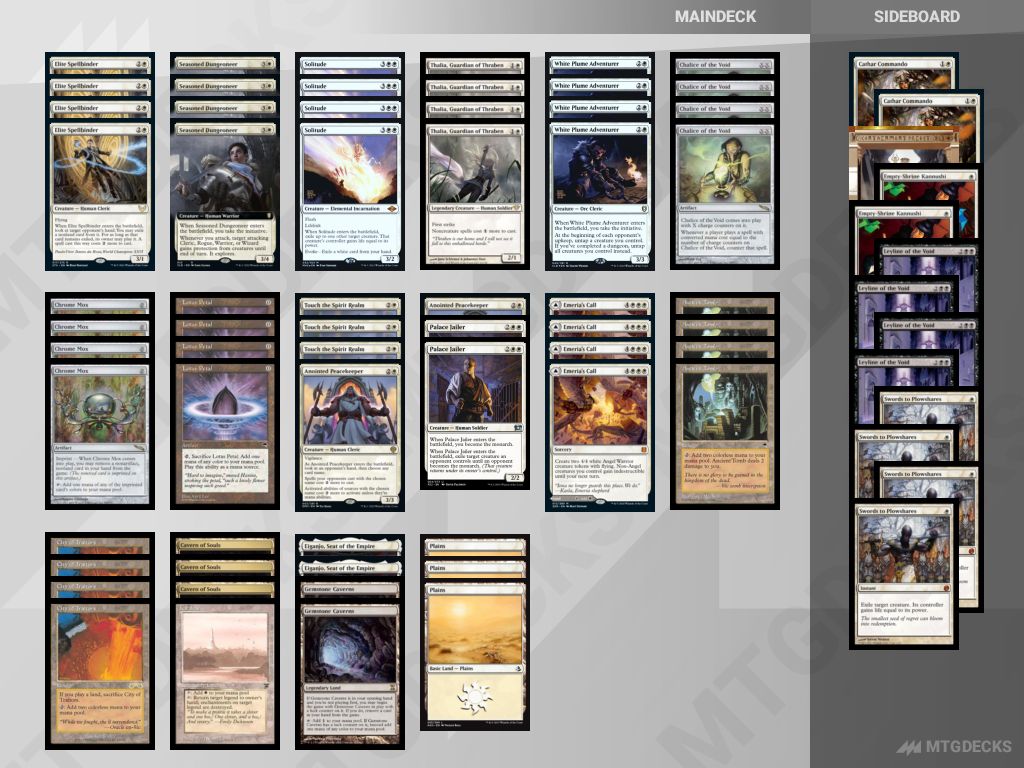
https://mtgdecks.net/Legacy/deck-w-decklist-by-albertogipsy-1516733
Final words
I hope you enjoyed this overview of the main archetypes of the non-blue-based format, and to all MTGO players: because of the easier access to cards, I encourage you to try some of these decks; they are all fun as well as competitive.
Pablo Carrasco
If you liked this article maybe you will also find interesting on of the following ones Mono-Green Tron Guide, Modern Domain Zoo, Hardened Scales In-depth & sideboard guide, Standard Domain Ramp - Deck & Side Guide
Sign Up for MTGDecks newsletter
You'll receive a weekly email with more articles like this.
Eternal formats expert
Eternal formats expert Pablo Carrasco is known as burrarun on Magic Online. There, he's had great success in Legacy and Vintage MTGO Challenges, winning many of them. In 2020, he even took home the Tolarian Academy Championship in Eternal Weekend. Pablo is a force to be reckoned with in any eternal format!
